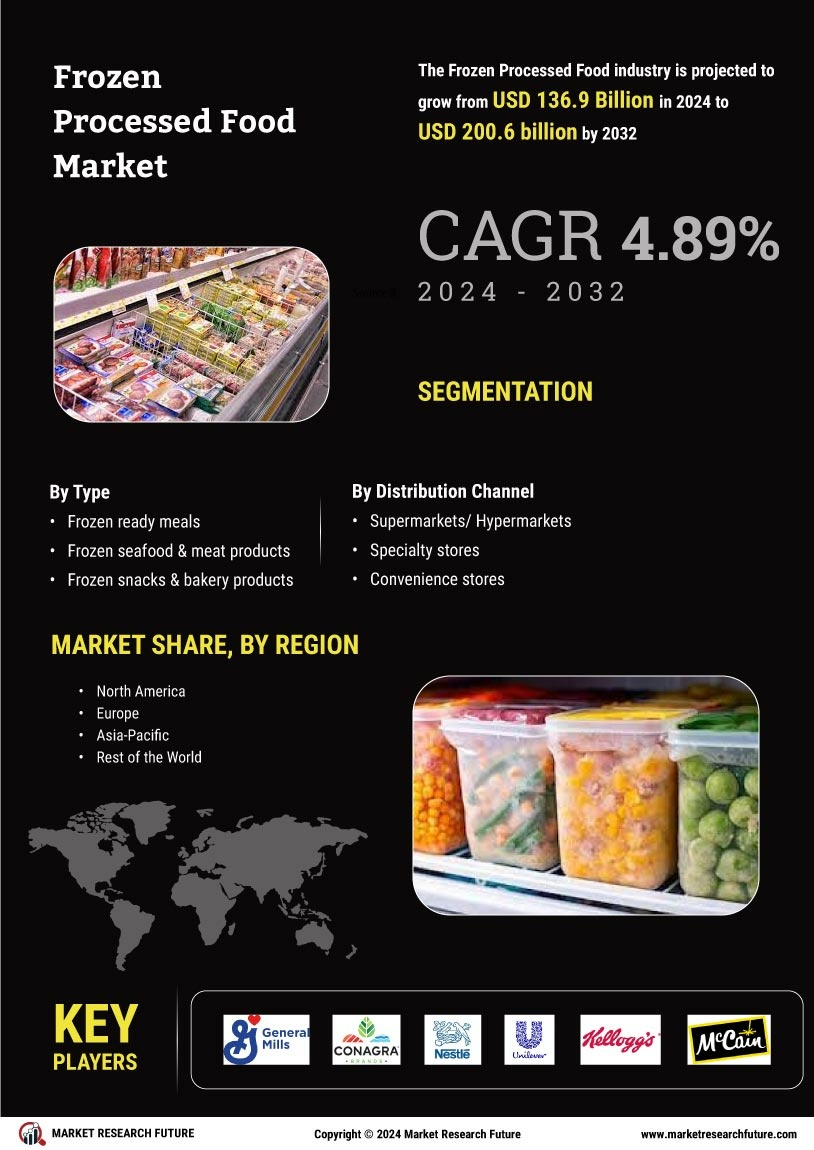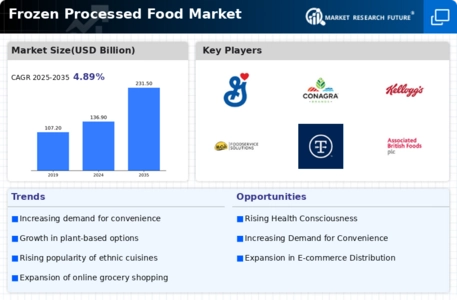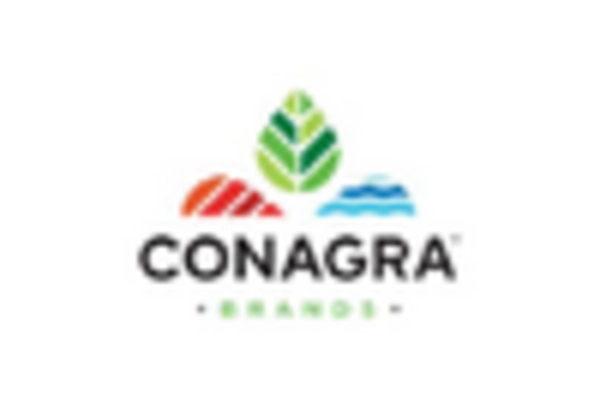The Frozen Processed Food Market is currently characterized by a dynamic competitive landscape, driven by evolving consumer preferences and increasing demand for convenience. Major players such as Nestlé (CH), Unilever (GB), and Conagra Brands (US) are strategically positioning themselves through innovation and regional expansion. Nestlé (CH) focuses on enhancing its product portfolio with healthier options, while Unilever (GB) emphasizes sustainability in its sourcing and production processes. Conagra Brands (US) is actively pursuing digital transformation to streamline operations and improve customer engagement. Collectively, these strategies not only enhance their market presence but also shape a competitive environment that increasingly prioritizes health, sustainability, and technological integration.
Key business tactics within the Frozen Processed Food Market include localizing manufacturing and optimizing supply chains to meet regional demands. The market structure appears moderately fragmented, with several key players exerting substantial influence. This fragmentation allows for niche players to thrive, while larger companies leverage economies of scale to enhance their competitive edge. The collective influence of these key players fosters a competitive atmosphere where innovation and responsiveness to consumer trends are paramount.
In August 2025, Nestlé (CH) announced a partnership with a leading technology firm to develop AI-driven solutions for optimizing its supply chain. This strategic move is likely to enhance operational efficiency and reduce costs, positioning Nestlé (CH) to better respond to market fluctuations and consumer demands. The integration of AI technology may also facilitate more personalized product offerings, aligning with the growing trend towards customization in food products.
In September 2025, Unilever (GB) launched a new line of frozen meals that are entirely plant-based, reflecting a significant shift towards sustainability and health-conscious eating. This initiative not only caters to the increasing consumer demand for plant-based options but also reinforces Unilever's commitment to reducing its carbon footprint. The introduction of these products may strengthen Unilever's market position by appealing to environmentally conscious consumers, thereby enhancing brand loyalty.
In July 2025, Conagra Brands (US) acquired a smaller frozen food company specializing in organic products, thereby expanding its portfolio to include healthier options. This acquisition is indicative of Conagra's strategy to diversify its offerings and tap into the growing organic food segment. By integrating these products into its existing line, Conagra Brands (US) is likely to attract a broader customer base, particularly among health-conscious consumers seeking organic alternatives.
As of October 2025, the competitive trends within the Frozen Processed Food Market are increasingly defined by digitalization, sustainability, and the integration of advanced technologies such as AI. Strategic alliances are becoming more prevalent, as companies recognize the value of collaboration in enhancing innovation and market reach. Looking ahead, competitive differentiation is expected to evolve, shifting from traditional price-based competition to a focus on innovation, technological advancements, and supply chain reliability. This transition underscores the importance of adaptability and responsiveness in a rapidly changing market landscape.


















Leave a Comment